I am no lockdown junkie. I’d like to get that straight before I
explain why the most extreme variant of lockdown scepticism is
rebarbative and destructive. I will never forgive the government for
dragging out the first lockdown for 14 weeks, pointlessly exhausting the
public’s patience and sowing the seeds of the non-compliance we see
today. I think the second lockdown was an unnecessary overreaction to a
surge in cases in the north-west that was being dealt with by local
restrictions. I think the 10pm curfew was counter-productive and the
tier system was clumsy and unfair.
I always thought “circuit breakers” caused unnecessary hardship and
had no chance of nipping the problem in the bud, as their advocates
claimed. It was criminal to not reopen the schools in June and I’m not
entirely convinced they should be closed now. I scorn the likes of Piers
Morgan and “Independent” SAGE who would have had us in lockdown all
year if they’d had a chance. No amount of comparing Sweden to its immediate neighbours will persuade me that the Swedes didn’t have a better 2020 than most Europeans. Contrary to folk wisdom, you can put a price on life and it can’t be denied that most of the people who die of COVID have had a good innings.
I mention all this in the hope of establishing that I am not some
wobbly-lipped pantry boy who’s scared of a bit of flu. I am a
libertarian at a free market think tank who has spent most of his
working life critiquing the excesses of the nanny state. I do not
secretly harbour thoughts of creating a police state or bankrupting the
economy.
Nevertheless, I don’t think it is necessarily a bad idea to prevent
tens of thousands of people dying this winter from a disease for which
we now have multiple vaccines. I had hoped that we could muddle through
with local restrictions, but the emergence in December of an
extraordinarily infectious new strain put an end to that. The number of
COVID cases doubled
in the first half of December and doubled again in the second half.
Much of London, Kent, and Essex seemed impervious to even the stringent
tier 4 restrictions. We did not need a model from Imperial College to
see which way this was going. In London and the south-east,
there are now more people in hospital with COVID-19 than at the peak of
the first wave. There are more on ventilators too, despite doctors
using mechanical ventilation less than they did in the spring. It is
going to get worse for some time to come. We had to get the numbers
down.

Source: https://coronavirus.data.gov.uk/
And so I reluctantly support this lockdown for the same reason I
initially supported the first one, as a last resort. It seems to me to
be the only way to ensure that everybody is able to access healthcare,
whether they have COVID or not. As soon as it has achieved its goal, I
will press for it to be lifted. I am fully aware of the social and
economic havoc lockdowns cause. We will spend much of the remaining
decade picking up the pieces.
I suppose my position is boringly centrist. If you want a more
invigorating take, you might be drawn to the Zero COVID strategy
supported by “Independent” SAGE or the plan laid out in the the Great Barrington Declaration
to shield the vulnerable and achieve herd immunity the old-fashioned
way. Both of these options carry significant downsides and have now been
made redundant by the vaccines, but whilst these ideas might have been
flawed or unrealistic, they were not crazy. The former had worked in New Zealand and the latter had been the preferred policy
of the chief medical officer until the hasty U-turn of March 2020.
These were ideas that reasonable people could debate without being
considered cranks.
But now, in the final months of this nightmare, the conversation
among many of the noisiest lockdown sceptics has become decidedly
cranky. The debate unfolding on social media is not so much about how to
deal with COVID-19 as about whether COVID-19 exists at all. Mention the
latest official COVID statistics on Twitter and you will be inundated
with replies from recently set up accounts telling you that the people
who tested positive for COVID-19 do not actually have COVID-19 and those
who are recorded dying from it probably got hit by a bus.
This would scarcely be worth worrying about if it were not spilling out into the real world. “Lockdown sceptics” have been recording footage
of empty hospital corridors which they then post on YouTube as evidence
that the health crisis is being manufactured. It saddens me to admit
that this kind of thing is coming from people on my side of the
argument, people who are anti-lockdown. Grifters, conspiracy theorists,
and bad faith actors have been tolerated for too long by lockdown
sceptics. You can draw a straight line from those who talked about a
“casedemic” a few months ago to the crowds of protestors outside hospitals today screaming that “COVID is a hoax.”
Although debates about the lethality of the virus and the
effectiveness of restrictions on social contact have been circulating on
the margins since the spring, September was the point at which these
talking points began to attract widespread attention. Ivor Cummins, a
former Research and Development manager at Hewlett-Packard, first
crossed my radar several years ago when he was promoting the low carb
diet. At the time, he struck me as a relatively harmless nutritional
entrepreneur with a mildly amusing name and a book to sell. He was an
annoyance to scientists and dietitians who found his claims risible, but
he was not a menace to public health. Cummins came to wider prominence
on September 8th, 2020, when he published a 37-minute video
entitled “Viral Issue Crucial Update Sept 8th: the Science, Logic and
Data Explained!” In this presentation he claimed that “the epidemic
largely ended around May/early June” and asserted that around 80 percent
of Europeans were “already de facto immune” to the novel coronavirus.
He claimed that increases in testing had created large numbers of false
positives, leading to a “casedemic” in which the number of infections
appeared to rise but there was “no mortality” because “the epidemic’s
gone.” It attracted a million views on YouTube within days.
Cummins argued that the spring outbreak would have faded away
naturally without non-pharmaceutical interventions such as lockdowns.
Herd immunity, he theorised, had been largely achieved and he insisted
that there would be no second wave. In the winter, he said, we would see
“a natural rise in the virome [the combined total of viruses in the
human body]; we’ll see influenza, we’ll see more impacts on hospitals,
we’ll see SARS-CoV-2 rising again, but that will be more normal winter
resurgent [sic] of influenza like prior years.” Cummins dismissed those
who warned of a second wave in France and Spain, where case numbers were
already growing, and described the rising caseload in the US as a
“double hump” caused by the southern states experiencing their first
wave. He assured viewers that the American spike was already on the
wane. Within two months, France and Spain were recording more than 400
COVID deaths a day and the US was climbing its biggest “hump” yet, with
every state except Hawaii experiencing uncontrolled community
transmission.
Twelve days after Cummins’s video went viral, Michael Yeadon, a former Pfizer scientist, wrote an article for the Lockdown Sceptics blog
arguing that the vast majority of positive tests for SARS-CoV-2 were
false. If a test produces a non-trivial rate of false positives, he
wrote, and if testing is performed at random on a population with a very
low prevalence of a disease, it is possible for the majority—or even
all—of the positive results to be false. Although he did not use the
term, he was describing a familiar scientific concept known as the base rate fallacy.
He was not wrong in theory, but he then went further. Based on the
assumptions that 0.1 percent of the population had the virus and that
the PCR test has a false positive rate of 0.8 percent, Yeadon made the
striking claim that “almost every positive test, a so-called case, identified by Pillar 2
[testing in the community] since May of this year has been a FALSE
POSITIVE. Not just a few percent. Not a quarter or even a half of the
positives are FALSE, but around 90 percent of them.”
The mathematics were correct so long as Yeadon’s assumptions were correct, but they were not. People in Pillar 2 are not
tested randomly. Many of them get tested because they have symptoms.
People with symptoms are obviously more likely to have the virus than a
random member of the public. The Office for National Statistics conducts
a separate random weekly test which was reporting
a prevalence rate of around 0.1 percent at the time. Strangely, Yeadon
did not question the ONS figure and instead used it as the basis of his
calculation. He did not draw the obvious conclusion that if the false
positive rate of the PCR test was 0.8 percent, the ONS should find
positives at least 0.8 percent of the time. Put another way, if every
single positive test reported by the ONS was wrong—a far-fetched
assumption—the false positive rate could not possibly be more than 0.1
percent. Moreover, the prevalence of SARS-CoV-2 in Britain was not
low. Fewer than a thousand tests a day were coming back positive in
July, but by the time Yeadon’s article appeared, they were exceeding
5,000. The number of tests performed each day had nearly doubled in this period, but that could not explain a fivefold increase in reported case numbers.
Yeadon’s concerns, which had always been largely theoretical, were
now irrelevant and would become more so as the number of cases rose in
the autumn. The claim that 90 percent of positive PCR tests are false
was a back-of-an-envelope calculation based on flawed assumptions, but
it was seized upon by COVID sceptics and given fresh impetus three days
later when British foreign secretary Dominic Raab appeared on Sky News to
explain why the UK was not testing inbound travellers at airports. “The
challenge,” he declared, “is that the false positive rate is very high.
It’s only seven percent of tests will be successful at identifying
those that actually have the virus.”
The clip duly went viral on social media but its central claim was
totally implausible. Even Yeadon had only claimed a 0.8 percent false
positivity rate. Although conspiracy theorists were convinced that Raab
had accidentally let slip the truth, the mundane reality was that he had
misunderstood the data on which he was relying. He was referring to a report by Public Health England
which claimed that only seven percent of infected travellers would be
identified through airport testing. This happened to be wrong. PHE made
the hopelessly unrealistic assumption that infected travellers who were
symptomatic enough to test positive would not get on a plane in the
first place and that only seven percent would become symptomatic in the
course of the flight.
Subsequent analysis by other academics
found that testing at airports would identify between a third and
two-thirds of cases, but that is not the main point here. The point is
that PHE’s findings had nothing to do with false positives and Raab was
wrong to use the phrase. If anything, he was talking about false negatives,
but the COVID sceptics had Raab’s words in black and white and decided
it was more likely that a widely used diagnostic test would have an
insanely high false positive rate than that an unscientific politician
would get his scientific terms mixed up during a live interview.
The false positive meme should have faded into obscurity by the end
of October when more than 20,000 cases a day were being reported and the number of people in hospital with COVID-19 had risen tenfold.
Instead, it became the foundation of an alternative theory of the
pandemic. During the summer months, it had become tempting to believe
that the pandemic was over, as both Cummins and Yeadon claimed, and that
only a “casedemic” remained. Maintaining this belief in October, when
the death rate had risen to a level last seen in May, took a certain
amount of mental agility but a significant number of people were able to
do it. The core ingredients of this alternative theory are as follows:
- The PCR test has a staggeringly high false positivity rate, meaning
that the great majority of “cases” (the word is usually enclosed in
derisory speech marks) are either asymptomatic or fake.
- Most of the people admitted to hospital with COVID-19 tested
positive after they arrived, either because they caught the virus in
hospital or because they were misdiagnosed with the unreliable PCR test.
- For the same reason, most of the people who are counted as COVID-19
deaths were admitted for treatment of another illness which killed them,
or just happened to die within 28 days of testing positive (by one
official measure, any death within 28 days of a positive test is
classified as a COVID death).
- Lockdowns don’t inhibit the spread of the virus in any meaningful way and therefore do not reduce the COVID death count.
- Lockdowns cause a large number of avoidable deaths, not only in the
longterm from unemployment, poverty, and missed cancer screenings, but
also in the short term, e.g., from suicide.
So long as you believe these five tenets, you have a theory with
almost impregnable circular logic. The acid test of the casedemic theory
is whether the number of people being hospitalised and dying with
COVID-19 increases after the number of positive tests increases. It
clearly does, but true believers dismiss this as another mirage created
by the false positives.
A rise in the number of excess deaths would be compelling evidence that the people dying “with COVID” had died of COVID and would not have died of anything else that year. The ONS has recorded excess mortality every week since mid-October, with the north-west hardest hit at first followed by London and the south-east more recently. In total, there were 71,731 excess deaths in England last year and 76,610 people had COVID-19 mentioned on their death certificate.
Coincidence? Why yes, say the sceptics. They claim that the excess
deaths were not caused by COVID-19, but by the lockdowns themselves. In
any case, they say, the rate of excess mortality is lower than it was in
the spring and the current rate is not without historical precedent.
Any suggestion that there would have been even more deaths without
lockdowns is dismissed as impossible because “lockdowns don’t work.”
With the delusions of September colliding with the reality of a
second wave that will kill more people than the first, true believers
have had to double down or flee the scene. Many have doubled down. Ivor
Cummins, who once insisted that there could be “no second wave without a second virus” now claims that he “foretold the second wave” and has shamelessly accused governments of not preparing for it. Yeadon, who claimed
in October that the pandemic was “over” in London and was “most
unlikely to return” still insists that PCR testing is “wildly
unreliable,” but has made his argument more technical so his lay followers have to accept it on trust.
As the HMS Casedemic slowly sinks into the ocean, the arguments used
to keep it seaworthy stop making sense even on their own terms. COVID-19
has now killed more than 0.1 percent of the population in 20 countries,
including Britain, but that has not stopped COVID sceptics claiming
that the infection fatality rate (IFR) is 0.1 percent or lower. This
would obviously require more than 100 percent of the population to have
had the virus and is a particularly odd claim coming from sceptics who
believe that most cases are false positives. Since the IFR is derived
from the number of deaths and the number of infections, a lower number
of infections would produce a higher IFR. Some sceptics believe that so
few people have had COVID-19 that the IFR should be closer to 100
percent.
Cummins, who has raised over £148,000
to make a documentary about “one man’s remarkable rise to prominence as
a ‘go to’ COVID commentator,” is having to perform a particularly
difficult balancing act as he seeks to reassure his fans that the second
wave of COVID-19 is nothing more than the normal “winter resurgence” of
seasonal viruses that he predicted. His followers and subscribers seem
not to mind his failed predictions and general inconsistency. Cummins recently suggested
that the lack of excess mortality in Ireland last year was evidence
that the panic over COVID-19 was overblown. Simultaneously, he has claimed
that lockdowns in the UK have killed tens of thousands of people.
Ireland spent longer in lockdown than the UK and yet the Emerald Isle
seems to have mysteriously avoided the lockdown deaths that have
supposedly plagued Britain. Ireland has also suffered far fewer COVID-19
deaths, but that cannot be explained by their lengthier lockdowns
because—you guessed it—lockdowns don’t work.
If we define lockdowns as laws commanding people to stay at home
except for essential purposes, the claim that they don’t work is either
trivial or wrong. It is trivial if it meant to tell us that lockdowns
merely push the problem into the future, and wrong if it is meant to
suggest that they do not reduce the infection rate. As the standard of
discourse has deteriorated, the latter interpretation has dominated.
The logic behind lockdowns is difficult to refute. If you reduce
human interaction, you will reduce the virus’s ability to spread. In
countries where mass testing is in place, you can see the effect very
clearly. Within five to 10 days of a lockdown being introduced, the
infection rate falls. A dramatic recent example is Ireland which went into lockdown on December 31st after seeing an almost vertical rise in cases. We saw the same thing in Wales in October and in England
in November. In country after country, you can tell when a lockdown
began by simply looking at the case numbers on a graph. Of course
lockdowns don’t make the epidemic disappear and of course there are less
restrictive policies that can reduce the caseload, but the claim that
they don’t work at all is, to put it charitably, disingenuous.

Source: Our World in Data
In the heads-I-win, tails-you-lose world of the hardened denier,
countries which lock down and have few deaths are proof that COVID-19 is
a paper tiger, but if COVID-19 deaths fall after a lockdown comes into
effect, the death rate was going to fall anyway because the virus was
tired or herd immunity had been reached. In countries such as Britain
which have managed to combine sporadic lockdowns with a high death rate,
the claim is that the deaths are not due to COVID-19, but to the
lockdowns themselves. And yet, if lockdowns are indeed the true cause of
excess mortality, the COVID sceptics need to explain why there has been
no excess mortality in countries such as New Zealand and Australia which
introduced lengthy and draconian lockdowns and experienced very few
COVID-19 deaths. They can’t. Nor can they explain why excess mortality has been highest in the regions of the UK that have had the most COVID-19 cases.
And while they believe that people are dying at home because the NHS
has been turned into a “COVID Health Service,” they cannot explain how
creating more COVID patients is going to help on that front.
If tens of thousands of deaths have been wrongly attributed to
COVID-19, then we are left to wonder what it is about testing positive
for SARS-CoV-2 that makes people so much more likely to die within 28
days? Why are so many doctors recording COVID-19 as the main cause of
death on death certificates if these people actually died of cancer or
got hit by a truck? Why is the government using a diagnostic test with a
93 percent false positive rate and why isn’t that test producing false
positives 93 percent of the time? And if lockdowns produce no
appreciable health benefits, then why are governments voluntarily
cratering their own economies for no reason?
The claims made by Cummins, Yeadon, and other supposed authorities
are demonstrably nonsensical and yet they are eagerly lapped up by an
army of social media disciples who have adopted the yellow smiley face
as a badge of their scepticism. The smiley symbol is supposed to
represent optimism in the face of adversity, but instead it makes the
whole movement look decidedly cultish, creepy, and faceless, like the
children in John Wyndham’s Village of the Damned. This
disconcerting impression is reinforced by their tendency to say exactly
the same things over and over again. Misleading graphs and blatantly
doctored images are circulated with abandon, spreading far beyond the
hub of hardcore believers and planting doubt in the minds of normal
people.
Doubt is at the heart of this phenomenon, and it is being
unscrupulously exploited. Can we prove that every death attributed to
COVID-19 was caused by COVID-19? No. Some of them almost certainly
weren’t. How many deaths were caused by lockdown? No one knows. Has the
government ever specified precisely what the false positive rate is? No.
Can we prove beyond doubt that the decline in case numbers seen around
the world shortly after lockdowns were introduced would not have taken
place anyway? No. How could we?
Some data simply don’t exist. Definite proof is only to be found in
mathematics. In life, as in court, you can only exclude reasonable
doubt. Those who cling to unreasonable doubts cannot be persuaded by
facts or logic. The smiley crowd are persistent in asking questions
about trivial issues for which there are no definitive answers, but have
no answer to the most fundamental questions asked of them in return.
Smileys generally won’t spell out the conclusion that their “scepticism”
leads them to because they know how contemptibly stupid it would sound,
but the scenario must go something like this:
A virus that has killed millions of people, including 50,000 in
Britain last spring, suddenly disappeared, and so the government
approved a highly inaccurate diagnostic test to keep the panic going
because Boris Johnson has always wanted the public to wear face masks or
something. Very few people actually have SARS-CoV-2 and even according
to the official figures only two per cent have it at the moment. As luck
would have it, a hugely disproportionate number of them happen to be
admitted to hospital and die from something else, thereby producing
scary death counts which are corroborated by corrupt doctors.
Another stroke of luck for the government is that last year
happened to have the largest number of excess deaths since 1940. This
could be due to lockdown deaths, whatever they are, or some other
epidemic unrelated to the coronavirus. Have you noticed how few flu
deaths there are this year? Bit suspicious, isn’t it? One possibility is
that despite a drastic reduction in air travel and an unprecedented
amount of social distancing, hand-washing, mask-wearing, and
self-isolation, Britain is suffering from an exceptionally severe flu
season, with flu deaths being wrongly classified as COVID-19 deaths by
corrupt and/or incompetent doctors.
Pretty far-fetched, isn’t it? And that’s before we get to the theories about Bill Gates and the Chinese Communist Party that are on the lunatic fringes even in the smiley universe.
What is driving this insanity? Almost all COVID sceptics admit that
there was a pandemic in the spring which killed tens of thousands of
people in Britain. Why, then, is it so hard for them to accept the
overwhelming likelihood that the same coronavirus is doing what viruses
do and spreading rapidly in the winter? This is perhaps the most
puzzling and interesting aspect of the whole phenomenon. The casedemic
theory is just one of many daft ideas that have been thrown around in
relation to COVID-19 in the last 12 months. Why has it not been quietly
forgotten like so many others? How has it managed to survive, spread,
and mutate with all the tenacity of the virus itself?
The answer, I think, lies in despair. Since March, there has been a
sense of living in a nightmare from which one cannot awake. The
non-pharmaceutical interventions introduced to contain the
virus—especially lockdowns—have been soul-destroying. The economy is
battered beyond belief, redundancies have gone through the roof, and
there are more grey weeks of a cold winter lockdown to endure. On the
other hand, we also have a potentially lethal and frequently
debilitating virus infecting at least 50,000 people a day, hospitalising
4,000, and killing close to a thousand. That, too, will go on for weeks
and, assuming you believe in germ theory and exponential growth, these
figures would be much worse if we resumed normal social contact.
It’s an awful situation to be in. It’s a zero-sum game in which
disease and death is traded off against misery and poverty. Until the
first vaccine arrived in December, COVID scepticism offered people a way
out. If the dangers of the virus were being overhyped by fearmongers,
and lockdowns were entirely ineffective, then societies could reopen
secure in the knowledge that there was nothing that could be done to
reduce the death toll (which would, in any case, be a fraction of what
we were told). The comforting lie that trade-offs could be avoided has
proved irresistible to those who have surrendered to confirmation bias
and constructed a parallel and preferable version of reality.
In this project, they have been ably assisted by the ignorance and
statistical illiteracy that pervades Twitter. People who are not used to
dealing with statistics have been trying to familiarise themselves with
concepts and figures they’ve never seen before and don’t properly
understand. Words and phrases are confidently repeated by those who
don’t really know what they mean. There is no shortage of stupidity on
Twitter, but this is something different, something almost transcendent.
The inability to absorb or even acknowledge the most basic facts is
beyond anything I’ve seen before.
But perhaps it’s not inability. Perhaps it’s just a refusal to face
the reality of agonising choices. It is an extreme form of motivated
reasoning, the flip-side to which is total credulity when presented with
claims that suggest that there is no problem, no trade-offs, no pandemic, only
malevolent governments and elites who could end the nightmare any time
they wanted, but prefer to terrify their populations and needlessly
wreck their economies instead.
We are in a no-win situation. The trade-offs are horrible. And so,
when confronted by someone who tells you that’s it’s all fake, that the
hospitals are empty and the test doesn’t work and the disease is
basically harmless and the government is lying, who wouldn’t want to
believe it? What could be more appealing than the idea that the thing we
hate is causing the problem we’re trying to solve?
It would be nice if the hospitals were empty and the hundreds of thousands of people being infected each week were false
positives. But we don’t live in that world, we live in this one. The
smileys are not bad people. They are not necessarily unintelligent
people. They are unhappy people wearing a mask of happiness, confused
and beaten and searching for an easy answer. They want someone to flick a
switch and make everything normal again. Who doesn’t? The trouble is
that there are no easy answers this time.
Christopher J. Snowdon is head of Lifestyle Economics at the Institute of Economic Affairs and the author of Killjoys and Polemics. You can follow him on Twitter @cjsnowdon.




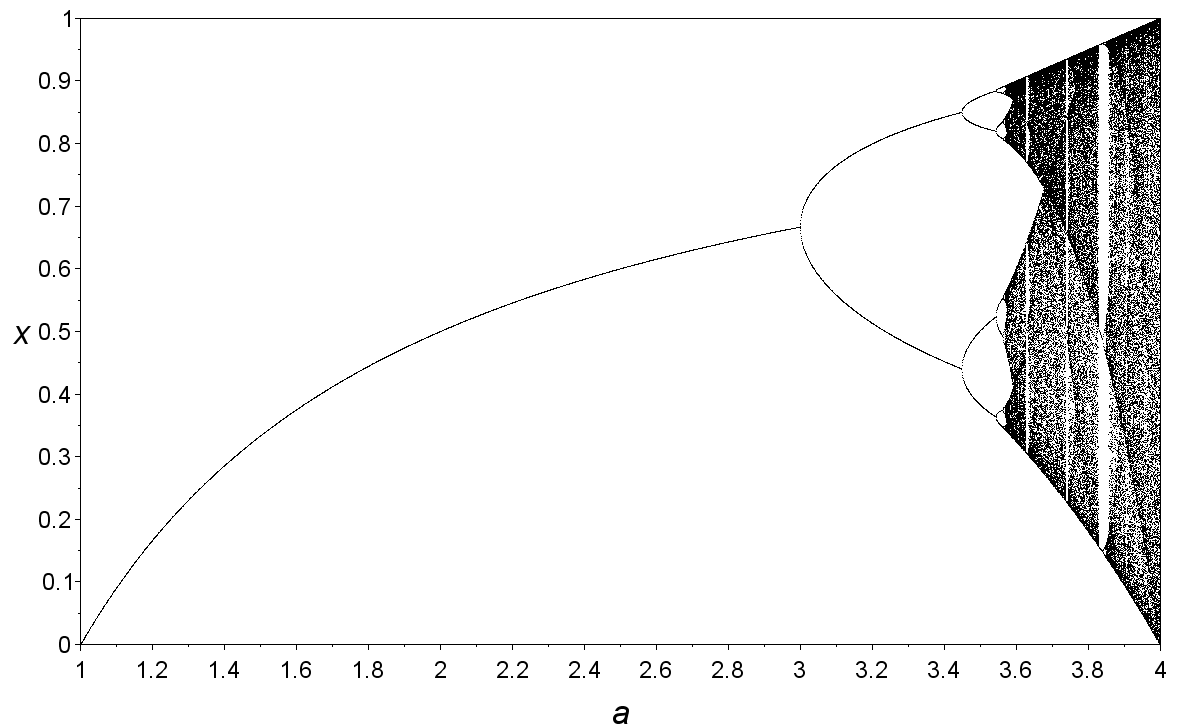
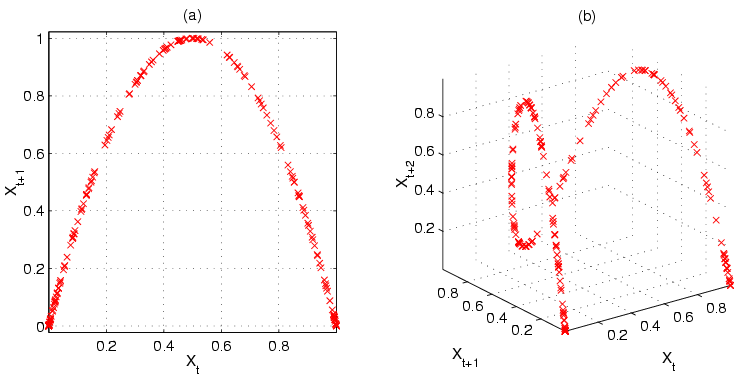
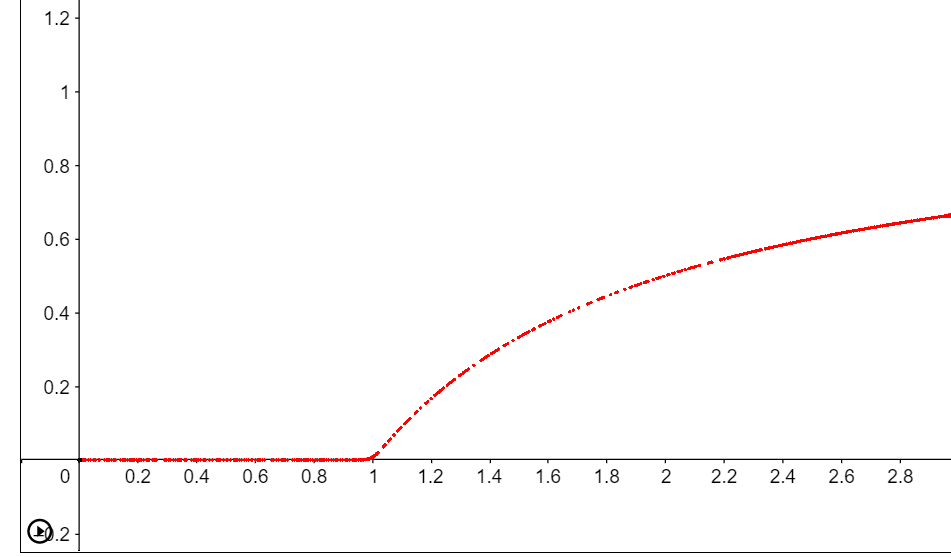
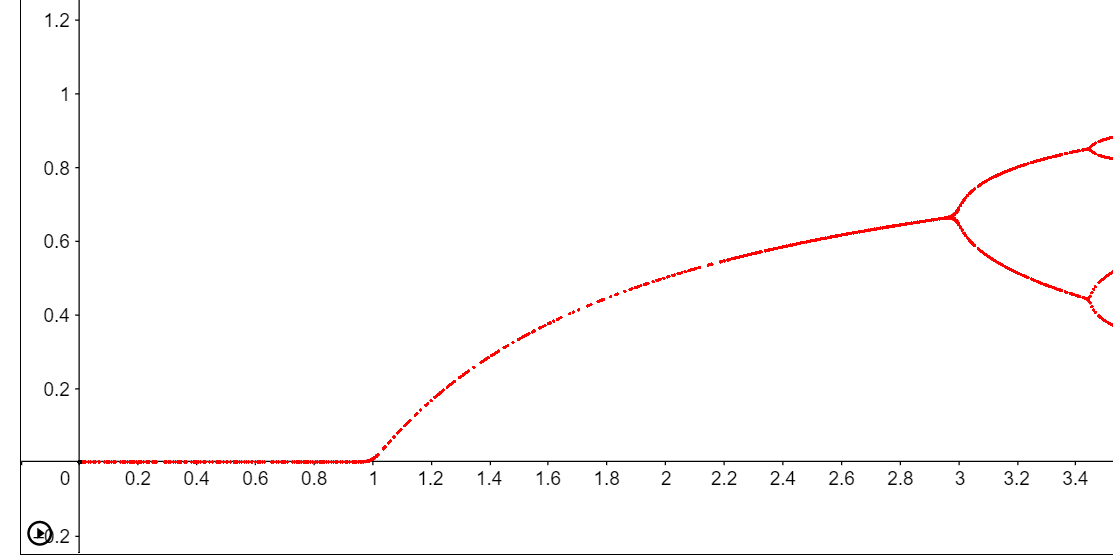
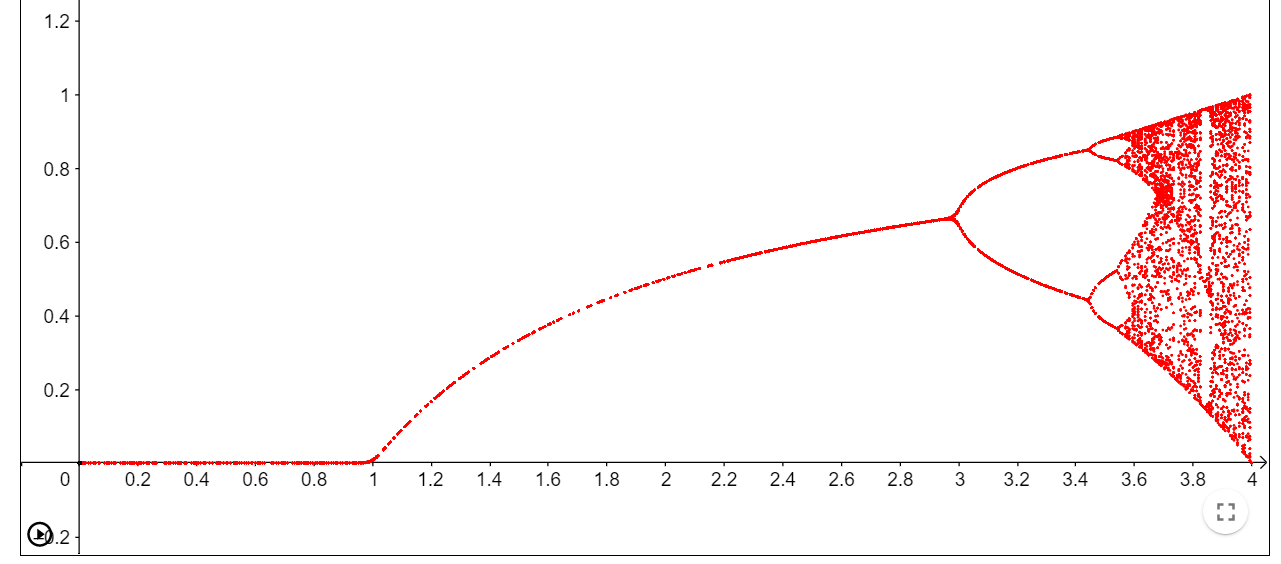
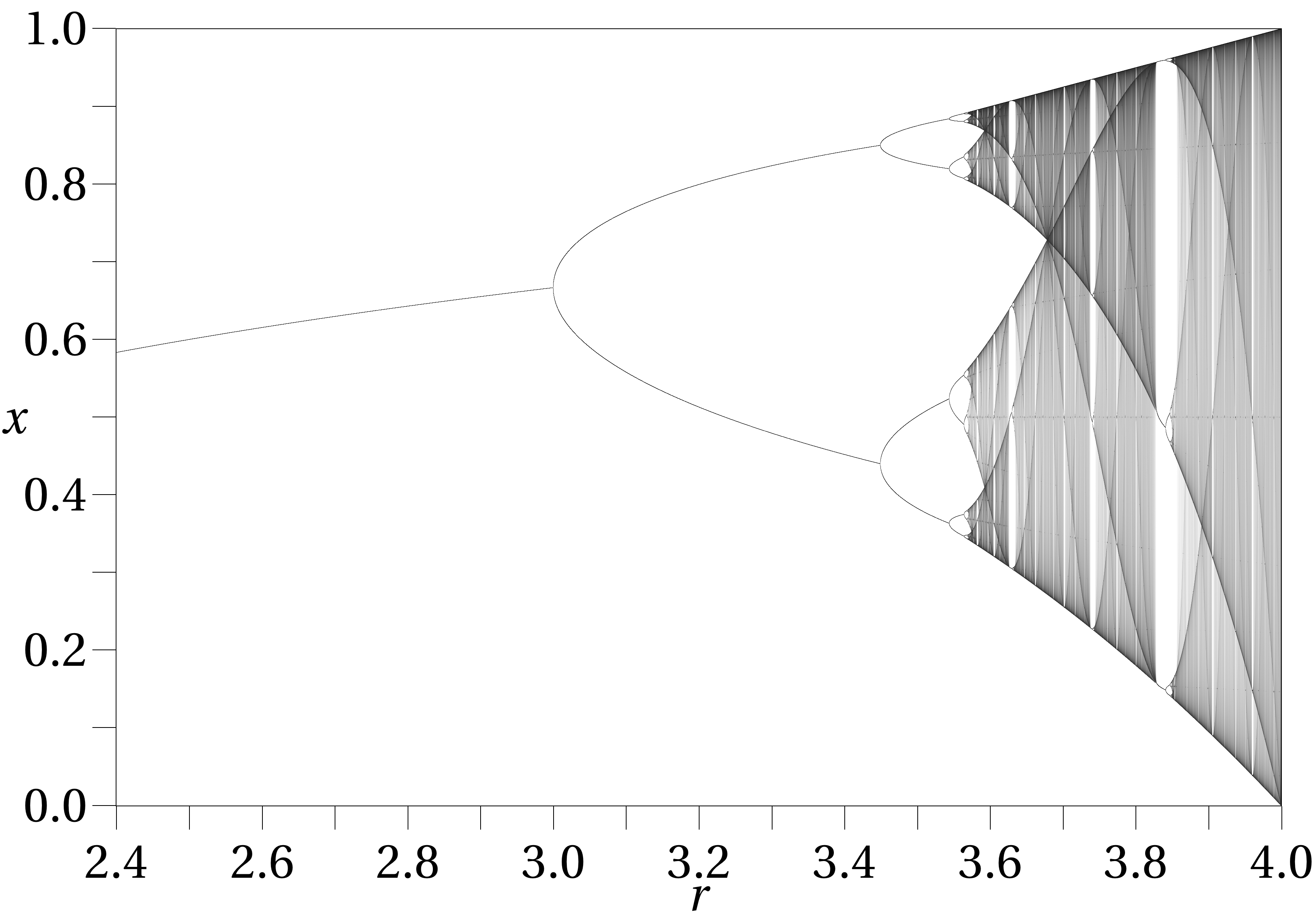


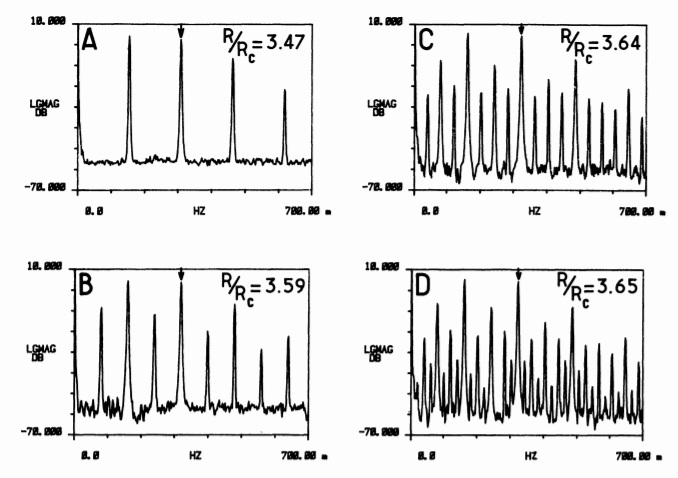



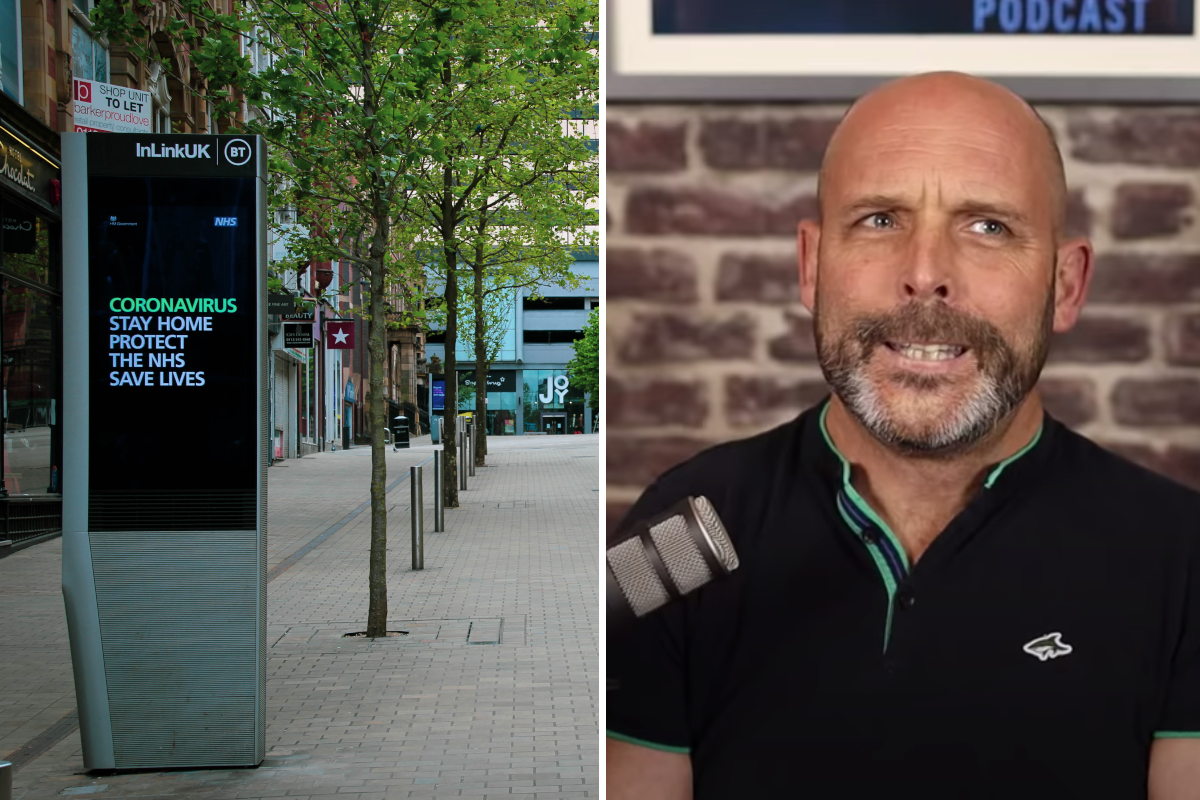


I fully agree with the author that too many people hold beliefs on this subject that are misleading, highly naive, or even gross nonsense, and that this can lead to an overly careless approach to a dangerous pandemic, rejection of reasonable countermeasures, and thus unnecessary suffering.
Notwithstanding the above, I would like to point out one aspect of the current implementation of lockdowns and similar measures that seems worthy of criticism nonetheless and that is not addressed in the article: How the state now intervenes in the private daily lives of its citizens in an incredibly drastic way that would have seemed almost unimaginable until recently.
Who would have thought not even ten months ago that our governments would dictate to people whether they are still allowed to meet with their family and friends? Where and with whom they are allowed to celebrate Christmas? At what times and on what grounds they are still allowed to leave their homes, and with whom their children are allowed to play?
This is not to say that it is not wise to be cautious about these things. This is about how the government now uses its power to coerce people and punish dissenters.
Which inevitably leads to scenes like in this video of Canadian police officers busting an “illegal” family reunion during the New Year’s holiday in Quebec:
Or this video, where police in Scotland enter a home and arrest the parents in front of their children, who are screaming in fear, after a neighbor ratted them out because “there were too many people inside”:
(more about this here)
Is this really the kind of society we want to live in? How willing are we to pay that kind of price?
Less than a year ago, such scenes would have been considered absolutely unworthy of a liberal society. Today, one might wonder how much of a safety buffer remains for a society in which this kind of situation is apparently becoming the accepted new normal. Historical fascism also arose as a response to a (real or perceived) threat to society that supposedly could not be countered in any other way than by all people submitting their liberties to a central leadership in favor of the common good.
And all those who think that it is appropriate for the government to subject people to such measures because the situation demands it should at least be honest enough to admit that they only care about values like liberalism and personal self-determination as long as the weather is nice, and that they are willing to throw them under the bus as soon as circumstances require it.
Critiquing the most extreme members of any movement is always like shooting fish in a barrel.
A balanced article would have considered the average age and health of those that have died of Covid. Some attempt at assessing the QALY impact of lockdown would allow us to assess the trade-offs.
It has been notable that the media coverage has lacked international perspective beyond the most superficial comparisons of case rates and death counts. It would be interesting to know the approach taken in other countries with respect to school exams and to everyday healthcare provision.
It is pointless pointing to Ireland as an indicator of the apparent absence of lockdown deaths, without an assessment of their health system’s approach relative to the broad shutdown of non-Covid NHS services.
Had I been a better person, I would have let this slide. As I’m not and the thinly veiled contempt in this piece rubbed me the wrong way, I have to point out that this quote from the beginning of the article is a particularly meaningless and virtue signalling statement.
I think this is completely backwards! Some people are more scared of government overreach than the disease. In that case, there not being a disease at all is the absolute worst case scenario. It seems to me that exaggeration is more likely to be rooted in fear than wishful thinking.
There are many possible views on lockdowns and mask mandates (other than those presented in this article). My view, for example: a loss of .1% of the population is a risk-level that I (at age 66, BTW) am willing to accept. The amount of masking and business closure here in the USA is not acceptable (to me) because this is not “living.” I’d rather take my chances.
Mmm. Well written article, but I rather dislike the idea that all skeptics should simply be seen as cranks. For example, who are the cranks in our day and age? Were people wrong to question climate change? Is Greta Thunberg a voice of reason? Was Al Gore? Which science do we trust? Is WHO, which has supported then rejected lockdowns, our savior? Is Big Tech, which modulates speech on the coronavirus, our leading health authority, and does it act purely altruistically? Honestly, name me the person who truly knows what the goddamn hell is going on, or someone who we know for sure isn’t operating with a hidden agenda.
I think most of the facts are in on lockdowns versus no lockdowns. California and New York have locked down their economies yet Florida has never locked down. The death rate in Florida which has, as we all know, a very aged population, is lower than both New York and California. My self absorbed governor is n New York, chock-full of hubris, said in his press conference three weeks ago that the spread from indoor dining socially distant was 1.4%. The spread in households was 74%. Please tell me how locking down and eliminating indoor dining with safeguards made any sense at all. This is what we are dealing with in New York. Gross incompetence by a governor whose direct orders killed well over 8000 nursing home residents and then he wrote a book praising his performance and the left cheered him on. Yikes!
Lockdowns are, and always have been, an inappropriate way of dealing with a respiratory virus. Because of the way the virus spreads such measure can only delay and not stop infections. Unless, of course, everyone in the world could be kept in strict quarantine for longer than the life cycle of the virus.
Outbreaks of diseases caused by respiratory viruses have been a regular winter phenomenon since the dawn of time. But never before has so much effort has been made in documenting to course of the disease by governments, then the medical profession or the MSM. Most of us, therefore, have no context to put the events of 2020. Since the excess deaths, as a proportion of the population*, in 2020 was lower than for any year before 2010 I firmly believe that had the government not panicked and not ordered the first lockdown in March then we would be able to look back on 2020 as just another “bad flu’ year”
The lesson that we all should learn from 2020 is just how dangerous the hubris of government is.
*Using raw numbers instead of proportional ones is just the sort of misinformation the MSM excel at.
Lastly, age- (and perhaps co-morbidity-)related excess deaths are absolutely critical to the lockdown discussion.
Yes (per the article), it is claimed by many that the full population IFR of covid is < 0.1%. Yes, many countries and cities (NYC ~0.2%) already have a total population fatality rate of > 0.1%, with likely full-population exposure at low to mid 10’s of % (according to antibody studies which currently show 20%-60% previous exposure). These are not inconsistent statements, according to the following.
Covid kills the elderly and otherwise infirm at an IFR about 8 orders of magnitude greater than children. The elderly and infirm are mostly clustered in enclosed care facilities. Infection rates or events of covid are correlated with indoor concentration of infected persons (care homes and hospitals unfortunately are perfect environments for spread). Care facilities have seen the majority of covid-related deaths.
It has been established that the IFR is massively age dependent - something like 0.0003% IFR for <14 and 30% IFR for >80. Removing known co-morbidities from the equation increases the age correlation (since of course older age itself is correlated with chronic medical conditions, including those that are considered covid co-morbidities).
Anyhow, thought I would attempt to correct the formal stats presented in the article.
As a concrete example, in Indian slum areas, serology studies of many months back showed antibody prevelance at >50% (!) but relatively low excess mortality rates. The slum full population IFR was calculated as something like 0.003%. How can this be? Well high exposure is hardly a surprise in dense urban areas with little opportunity for good hygiene practices - hence the high antibody prevalence. Why the low fatality rates? Perhaps a combination of youth-dominated demographics, and unusually low prelavence of important co-morbidities - almost no obesity, low rates of hypertension. Also possibly high natural vitamin D levels - sunny environment and mostly outdoor lifestyle.
Even assuming similar per-demographic mortality rates in different parts of the world, it still could be, and likely is, true that developed countries with flat (elderly-skewed) demographics will end up with full-population IFR that is orders of magnitude higher than that of developing countries with wide population pyramids (youth-skewed).
Treating covid with a 1 policy fits all (ages and/or countries) is criminally negligent for all ages except the middle-aged (40’s odd). For the elderly (and highly at-risk) the criminality is lack of focused protection. For the young, the criminality is loss of opportunity (schooling and beneficial employment).
There are four good reasons why we need the cranks.
And then there is this:
Snowdon asks:
There are plausible alternative theories for this behavior, and as a libertarian you know this. They are plausible for the reason that Western governments have already, for decades, led their countries into steady plunder, wealth concentration, and liberty limitations, far beyond reason. The evidence is solid that the vast majority of top members of Western governments simply don’t care about the well-being of their constituents. That’s where the skeptics start. So, like the boy who cried “Wolf!”, the [magnanimous tool | Machiavellian weapon] of logic today begins severely handicapped.
And of the skeptics:
and so, throwing his hands up in frustration, asks
Even the lay audiences are now well-trained in the techniques of successful evidence-free assertion-making. They have seen how, and how well, their “leaders” use bait-and-switch. Once trust is lost, propaganda from above deflates, and propaganda from below proliferates, because all people – capable or not – start coming up with their own ideas and their own ways of pushing them. So now Western governments are flailing (and failing) wildly in their attempts to shepherd their flocks.
This communication war must, somehow, be turned back into communication diplomacy. How, without decades to spare, I don’t know.
If you lie to the people, again and again, they will stop believing you. Shocking, huh? It has been a blizzard of lies, incompetence and corruption.
Yes, it’s disappointing that Snowdon doesn’t grapple with the alternatives presented by both observation and thinking about these decisions in the context of public choice theory. There’s the “do something” bias of governments - both elected officials and unelected civil servants - when confronted with a problem. That’s there even if the solution does little to address the problem or badly fails a cost-benefit test.
Think of the matrix of outcomes as hospitalizations and deaths increase.
Lockdown and they still increase? Either “the lockdown prevented far worse” or “people just didn’t follow the rules enough”. We’ve seen both of these non-falsifiable answers given on many occasions.
Lockdown and they decline? “Ah ha, the lockdown worked”. And again, we have no direct comparison to what would have happened without a lockdown.
Don’t lockdown and they increase? From the media, and the academic experts who get quoted in stories: “This result is due to government inaction. Thousands of deaths could have been prevented”.
"Don’t lockdown and they decline? Crickets from the media. I think that the U.S. national media only remembers that Florida and several other states exist when their respective COVID numbers get worse, not when they get better. Or - if forced to confront the situation - people and businesses took actions that were the same as a lockdown.
Add to the mix that public health officials and academics have no sense of how the economy works. That’s both in theory and in practice. Their lived experience is that an entity magically deposits a paycheck every pay period, so there’s no intuitive sense of relying on paying customers as the way to earn a living. They also don’t seem to be much of multi-variate thinkers about lockdowns and COVID, even within their field of broader health outcomes. And, of course, the tendency for extreme predictions - hello, Mr. Ferguson - to be covered preferentially by the press.
Underlying all of this is the reality that guiding lockdown policy gives them technocratic power of which they’d never dreamed prior to 2020. It has to be intoxicating to be in charge of so much of how society functions.
This is a piece clearly from someone who has worked from home and enjoyed the lockdowns. This was a big test of science and philosophy and we have failed on both counts.
a) The science was very clear: there shall be no lockdowns for flu-like viruses. The last they were tried was for Ebola in 2014 and an evaluation showed that they did not help (targeted quarantines did help). Substantial literature existed in the past to refute the idea of indiscriminate lockdowns, also because these infringe human rights. Snowdon obviously cares not for basic freedoms.
b) The argument of lockdown opponents is not against social distancing per se. Voluntary social distancing and hand hygiene are a part of good practice, as followed by Sweden. They too had lockdowns but these were not coercive. That coercion is the real problem, not social distancing.
c) Australia should never be cited as an example: it is nothing short of the most inhumane totalitarian society in the world today, not a role model for anyone in the civilised world or for anyone who considers himself human. Those of us who have lived through living hell in Melbourne and locked up in Australia like chicken in a coop (borders closed for a year), with wide-scale police brutalities on the young who underwent the most extreme mental torture ever, know that this is the worst form of civilisation in human history. That a few (extremely elderly) lives might have been saved from a natural cause is no excuse to cause such extreme harms. And hundreds of people have also died FROM lockdowns - See my complaint to the International Criminal Court for details. We do not authorise a government to take the life of person X while trying to save the life of person Y.
d) Are we going to do this for all other pandemics in the future? Is this our new “science” - divested entirely from consideration of humanity and liberty? I’m afraid I will never support such “science”. There are thousands of smarter ways to deal with pandemics than the way we have dealt with them in the West, copying Jinping’s totalitarian program.
I see from this article that the IEA might have now effectively become a promoter of police brutalities and totalitarianism. This is extremely unfortunate given the good impression I once held of this institution.
Here is an even less contentious fact. 1% of Americans die every year.
That figure is skewed compared to life-expectancy only because of immigration.
Here is a simple compute. Take any country’s life expectancy, say 75 years for most developed countries. Divide 100 by that number for any country, e.g. 100/75 = 1.3%. That is your ambient full-population annual death rate.
Covid has been with us for a year already and we’re arguing whether it’s IFR is 0.3% or 0.1% etc.
It’s an order of magnitude less than the ambient mortality rate.
Yes, this is what the world has managed to manufacture a fanny wobble, an existential crisis, call it what you will, about.
Is our generation just a bunch of pansy’s? Which I think is the world that the author was trying to use when he substituted it with the unprecedented ‘pantry’ in this context.
By comparison, 50 million people died of ‘Spanish Flu’ in one year when the population of the world was 1/10 of what it is now.
In modern terms that’s equivalent to 500 million people dying.
What do we have after a year of covid-19? Yes, 2 million deaths.
And we have completely changed our lifestyles and life choices because of it.
Shame on us, I reckon. Pansy boys we all are, as is the author who really should take some lessons in statistics before he pontificates again.
(repost warning)
Article a few weeks ago about how the hospitals were overwhelmed because of COVID. Written by reporter Denis Campbell.
Articles from 2012, 2013, 2014, 2015, 2016, 2017, 2018 and 2019 about how hospitals are overwhelmed (of note is the fun fact that 6 of the 8 scare articles about how hospitals are overwhelmed are by the same Denis Campbell).
And people wonder why the sheep no longer trust mass media?